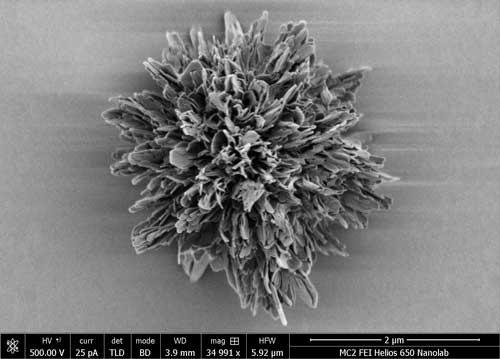Nanowerk April 10, 2020
The structural complexity of composite biomaterials and biomineralized particles arises from the hierarchical ordering of inorganic building blocks over multiple scales. An international team of researchers (USA – University of Michigan, Caltech, University of Pennsylvania, Brazil) assembled hierarchically organized particles (HOPs) with twisted spikes and other morphologies from polydisperse Au-Cyc nanoplatelets. Its complexity is higher than biological counterparts or other complex particles. Their intricate organization emerges from competing chirality-dependent assembly restrictions that render assembly pathways primarily dependent on nanoparticle symmetry rather than size. The researchers believe that the tactics they have uncovered can help scientists engineer particles that improve biosensors, electronics, and the efficiency of chemical reactions…read more. TECHNICAL ARTICLE

Made from curved gold-cysteine nanosheets that all twist in the same direction, the spiky nanoparticle achieved the highest complexity measured. (Image: Wenfeng Jiang, Kotov Lab, University of Michigan)